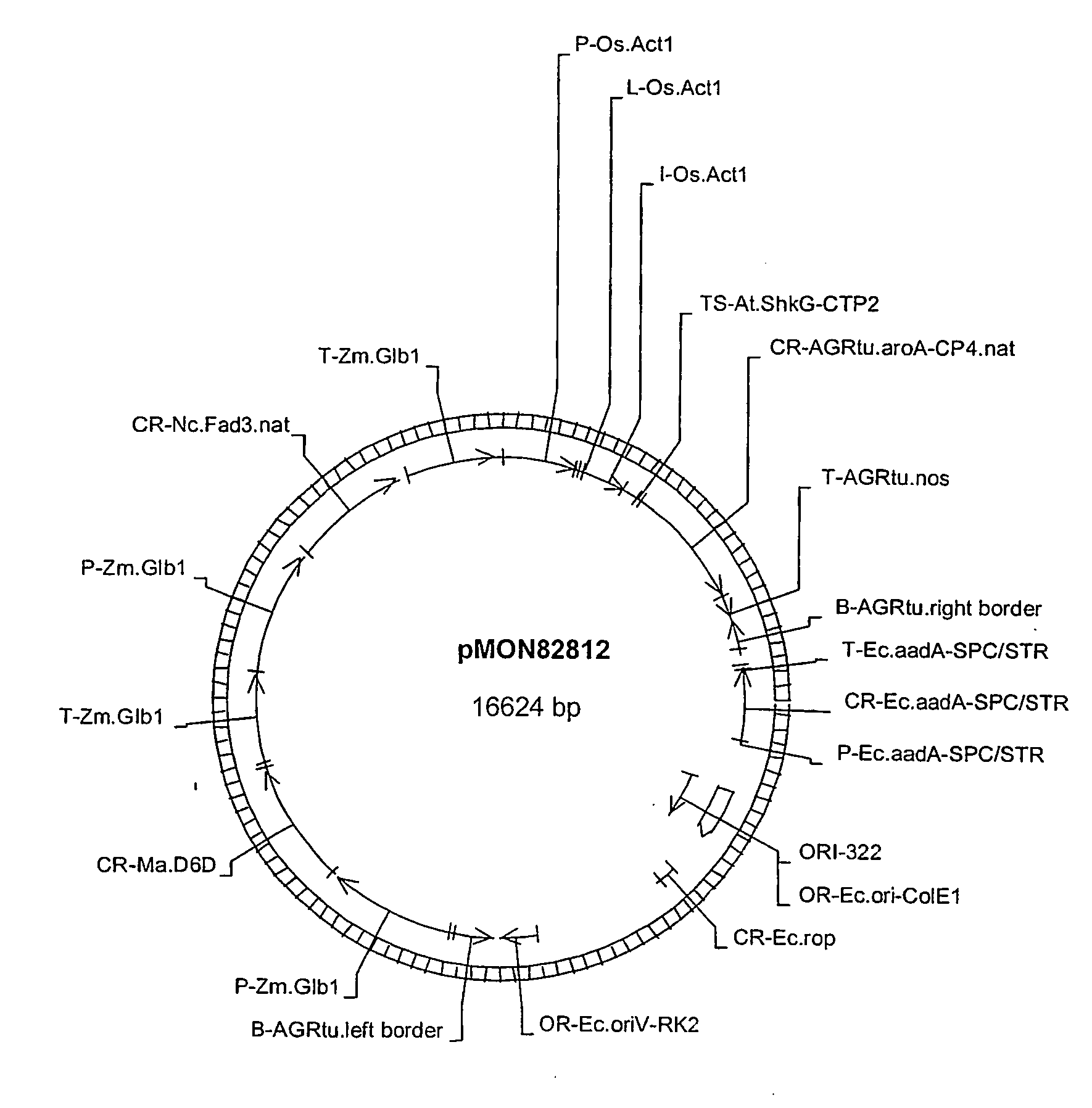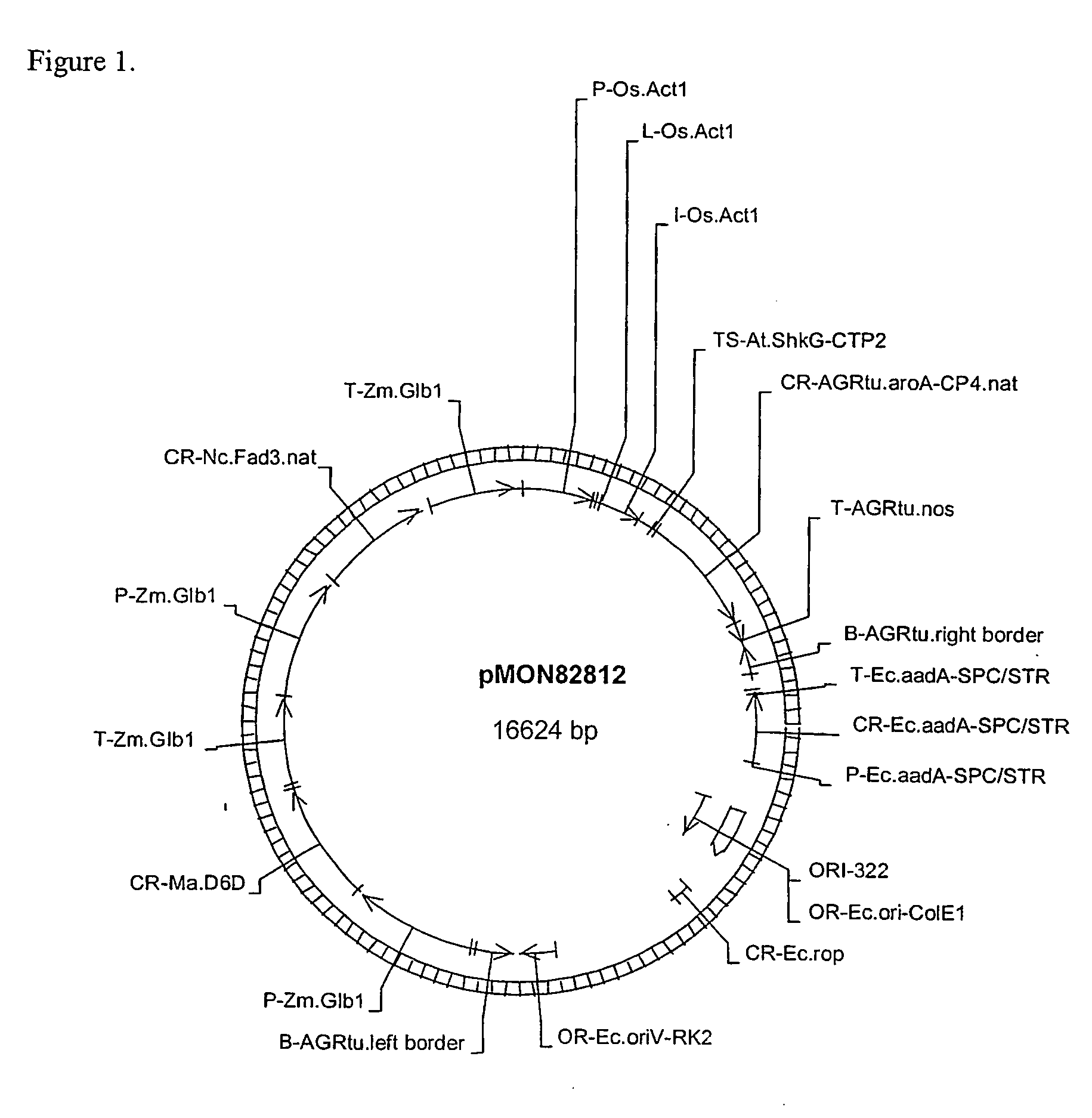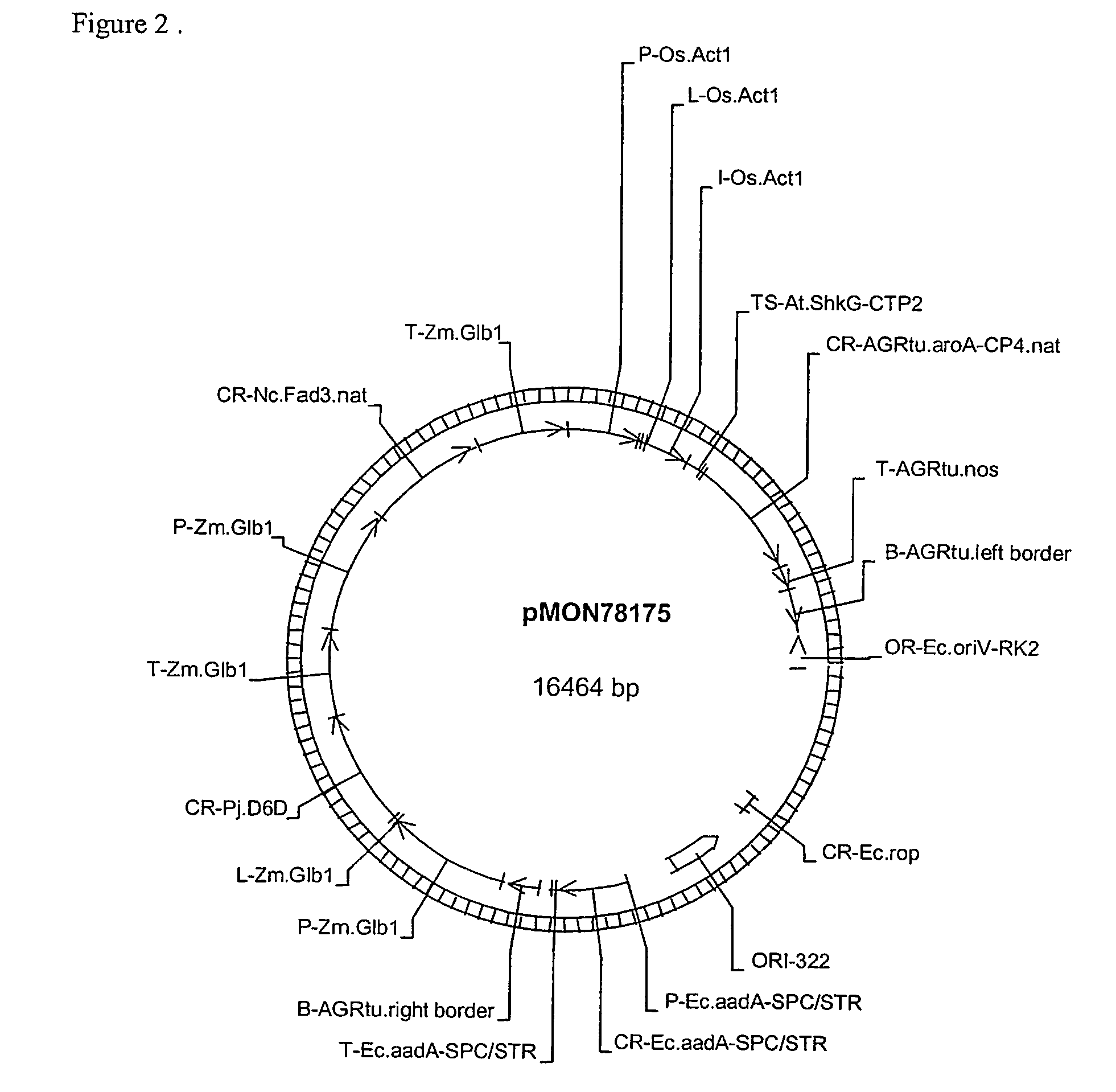Expression of Fatty Acid Desaturases in Corn
a technology of desaturase and corn, which is applied in the direction of oxidoreductases, depsipeptides, peptide/protein ingredients, etc., can solve the problems of unsatisfactory current availability of pufa, uncontrollable fluctuations in availability of natural sources of pufa, and depletion of fish stocks, so as to increase the sda content of the edible product, increase the ratio of omega-3, and increase the nutritional value of an edible produ
- Summary
- Abstract
- Description
- Claims
- Application Information
AI Technical Summary
Benefits of technology
Problems solved by technology
Method used
Image
Examples
example 1
Vectors for Expression of Δ15- and Δ6-Desaturases in Corn
[0084]A binary vector was constructed to express a Δ15-desaturase and a Δ6-desaturase in corn embryo and aleurone tissue. This construct was prepared with the globulin promoter driving expression of a Neurospora crassa Δ15-desaturase mutagenized to increase expression in a monocot such as corn (SEQ ID NO:5) and of a Mortierella alpina Δ6 desaturase (SEQ ID NO:6, bp 71-1444) (U.S. Pat. No. 6,075,183). The M. alpina Δ6 desaturase was cloned into a shuttle vector containing the globulin promoter, pMON67624, resulting in pMON82809. The mutagenized N. crassa Δ15 desaturase was cloned into a shuttle vector containing the globulin promoter, pMON67624, resulting in pMON82810.
[0085]The two globulin desaturase expression cassettes were then cloned into the pMON30167 corn binary vector containing the CP4 marker gene for glyphosate resistance. The first expression cassette containing the M. alpina Δ6 desaturase was cloned into pMON30167, ...
example 2
Vector for Expression of a Monocotyledonous Sequence-optimized Primula Juliae Δ6 Desaturase in Corn
[0087]This example sets forth the design and construction of a Primula juliae Δ6 desaturase polynucleotide molecule modified for expression in monocotyledonous plants. It is well known in the art that non-endogenous protein-encoding sequences may not express well in plants (U.S. Pat. No. 5,880,275, herein incorporated by reference). Therefore, using a native PjD6D polypeptide sequence (SEQ ID NO: 3), an artificial PjD6D protein-encoding polynucleotide sequence was designed and constructed by 1) using a codon usage bias similar to that of highly expressed monocot proteins, and by 2) removal of RNA destabilizing elements previously characterized and known to affect mRNA stability in planta (U.S. Pat. No. 5,880,275). The resulting modified PjD6D polynucleotide sequence was designated PjD6Dnno (SEQ ID NO: 8) and encodes a polypeptide identical in sequence to the native PjD6D polypeptide (S...
example 3
Fatty Acid Analysis
[0089]Fatty acid composition of mature kernels expressing pMON82812 was determined by grinding corn kernels and extracting the homogenate with heptane. The heptane extract was treated with toluene containing triheptadecanoin at 0.25 mg / ml and sodium methoxide in methanol (0.6 N). The reaction was stopped with aqueous sodium chloride (10% wt / vol). After partitioning at room temperature, the organic phase was analyzed by GLC (Hewlett Packard model 6890 (120 volt) equipped with a split / splitless capillary inlet (250° C.) and a flame ionization detector (270° C.). The column was a Supelco 24077 (0.25 mm od.×15 m length) with a 0.25 μm bonded polyethylene glycol stationary phase. The fatty acid methyl esters are identified by retention time comparison to commercial standards. Qualitative weight percent compositions are calculated as area percents of identified peaks. The results of the analysis for kernels that exhibited SDA and GLA are given in Table 1. Partial null k...
PUM
| Property | Measurement | Unit |
|---|---|---|
| temperature | aaaaa | aaaaa |
| length | aaaaa | aaaaa |
| length | aaaaa | aaaaa |
Abstract
Description
Claims
Application Information
 Login to View More
Login to View More - R&D
- Intellectual Property
- Life Sciences
- Materials
- Tech Scout
- Unparalleled Data Quality
- Higher Quality Content
- 60% Fewer Hallucinations
Browse by: Latest US Patents, China's latest patents, Technical Efficacy Thesaurus, Application Domain, Technology Topic, Popular Technical Reports.
© 2025 PatSnap. All rights reserved.Legal|Privacy policy|Modern Slavery Act Transparency Statement|Sitemap|About US| Contact US: help@patsnap.com



